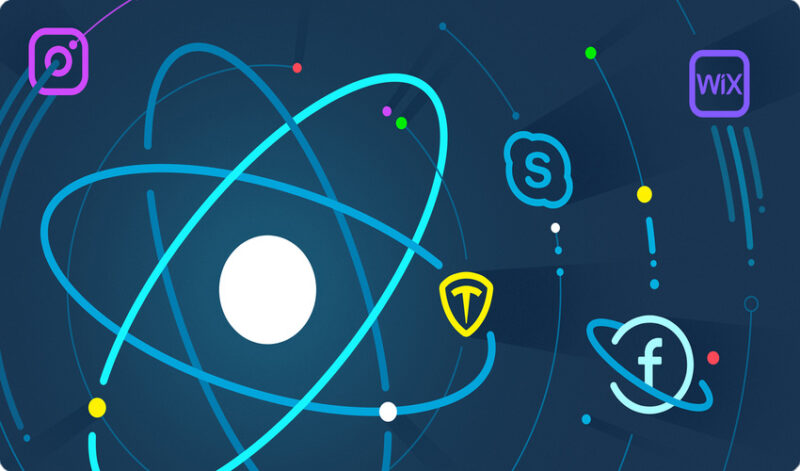As a practical way to create cross-platform mobile apps without breaking the bank, React Native is getting more and more popular. According to a recent study, nearly one-fourth of successful mobile applications are created with React Native.
React Native was built at the beginning to speed up the development of mobile applications. Your life will be much easier if you create an app once in JavaScript and then deliver it to Android and iOS. Even if React Native first didn’t receive the recognition and community support it deserved, things are now changing.
A growing number of people are using React Native, and the community is embracing it. React Native is making it incredibly easy to create fantastic apps, and people are starting to appreciate it.
In this blog, we will briefly explain what React Native is and why it is among the best cross-platform app development frameworks available today.
Let’s begin!
What Is React Native?
The React Native framework enables JavaScript developers to build native mobile apps. To construct a mobile application, you would typically need to employ Swift/Obj-C and Java (for Android) (for iOS). React Native eliminates the need for it by enabling developers to create fully functional apps for both platforms in much less time and using just one code.
Benefits of Using React Native to Build Cross-Platform Mobile Apps
React Native has countless benefits over other cross-platform mobile app development frameworks that you just can’t ignore. Here are a few of those:
- Backed by the likes of Facebook
React Native has been used to build hundreds of mobile applications that now have millions of downloads, including the likes of Facebook and Instagram. The SDK is backed by Facebook and has gained much more credibility and market share since it was open-source. Hundreds of businesses are switching to React Native regularly due to its countless benefits.
Here are some of the few companies that switched to React Native in recent years.
- Uber Eats
- Wix
- Sound Cloud
- Delivery.com
- Walmart
- Discord
- Shine
- Bloomberg
The rate at which developers and app development companies are adopting React Native is truly astonishing. In tech-enabled, future-centric cities, this framework is more commonly used than other cross-platform development frameworks. For instance, any mobile app development company in USA, Houston, NYC, and other popular cities for tech, will recommend their clients to go with react native development.
- A Single Codebase for iOS & Android
With React Native, you can create a simplified codebase that runs on iOS and Android. Additionally, rather than just “functioning,” it compiles native Java and Swift code. React Native creates a link between online UI components and their native Java/Swift counterparts.
Think about how this could affect your software project. There is no need for two development teams for two platforms. Layouts and features do not have to match. Simply said, you go forward more rapidly and use your resources better.
- No Need to Learn Additional Languages
Developing React Native apps requires less specific skills. It’s likely that you already have a JavaScript programmer on your team, maybe even a ReactJS programmer. Developers with knowledge of Swift or Java are harder to find than JS developers.
Your front-end developer, especially if they have experience with React, can pick up React Native fast, even if they have never used it before. To get started, you just need to spend some time researching which online components connect with which mobile components.
- Rising Popularity
Development on React Native is ongoing. React Native is continually being improved by Facebook and the large community surrounding it. In a few months, things could be different if you can’t solve an issue now because React Native doesn’t have the solution.
Even Microsoft took note of React Native, which led to the development of their own derivative called React Native for Windows. Their technology makes it simpler for developers to produce apps for Windows 10, Windows 10 Mobile, and Xbox One.
- Rich User Interface with Native APIs
React Native acknowledges and reflects differences between iOS and Android, unlike other cross-platform frameworks and progressive web app methodologies. It depends on native visual components like buttons, menus, status bars, etc., and native APIs. In light of this, the identical views will have somewhat different appearances on Apple and Android devices and update in accordance with the chosen operating system.
React Native includes each and every crucial UI component. However, if you want more sophisticated functionality, you may bridge the gap using plugins made available by the community. A different approach is to build a native module within your JS code to gain access to native APIs that aren’t usually supported. This is relevant to features like Apple Pay and Google Pay.
- Super Fast Speed & Component-Based Development
To save you time while creating standard blocks from scratch, React Native provides a collection of ready-to-use components. You are not, however, restricted to the cluster by the Social team. Numerous libraries made by RN contributors and made available on GitHub are available for you to pick from.
Here are some common examples:
- React Native Elements to share UI components between RN and React web apps (316 contributors, used by 95,200+ developers)
- NativeBase to select from an extensive collection of customizable UI elements (196 contributors, used by 55,800+ developers)
- Lottie for React Native to create and ship animations (91 contributors, used by 80,100+ developers) are just a few of the tools that more than 116,000 developers use.
With so many prebuilt components available, you can build custom, production-ready apps and MVPs (Minimum Viable Products) at an unheard-of rate.
Wrapping Up
Simply put, React Native makes it way lot easier and more affordable to build remarkable mobile applications with Native like user-interfaces.
If you are an entrepreneur looking to invest in an app business, hiring a react native development company should be your go-to choice. It will help you save a good portion of your capital for further investment and also help you get both iOS and Android versions of your app on the market quickly.
Read Dive is a leading technology blog focusing on different domains like Blockchain, AI, Chatbot, Fintech, Health Tech, Software Development and Testing. For guest blogging, please feel free to contact at readdive@gmail.com.





